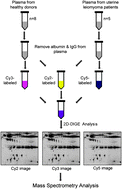*
Corresponding authors
a
Department of Obstetrics and Gynecology, Chiayi Christian Hospital, Chiayi, Taiwan
b
Department of Science and Technology, Chang Gung University, Chiayi, Taiwan
c
Institute of Bioinformatics and Structural Biology and Department of Medical Science, National Tsing Hua University, No. 101, Kuang-Fu Rd. Sec.2, Hsin-chu, Taiwan
E-mail:
hlchan@life.nthu.edu.tw
Fax: 886-3-5715934
Tel: 886-3-5742476
d
Family Medicine, Chiayi Christian Hospital, Chiayi, Taiwan
e
Department of Applied Science, National Hsinchu University of Education, Hsinchu, Taiwan
f
Department of Medical Research, Chiayi Christian Hospital, No. 539, Jhongsiao Rd., Chiayi, Taiwan
E-mail:
yingray.lee@gmail.com
Fax: 886-5-2765041, ext. 1094
Tel: 886-5-2765041, ext. 5560
g
Chung Jen College of Nursing, Health Science and Management, Chiayi, Taiwan


 Please wait while we load your content...
Please wait while we load your content...